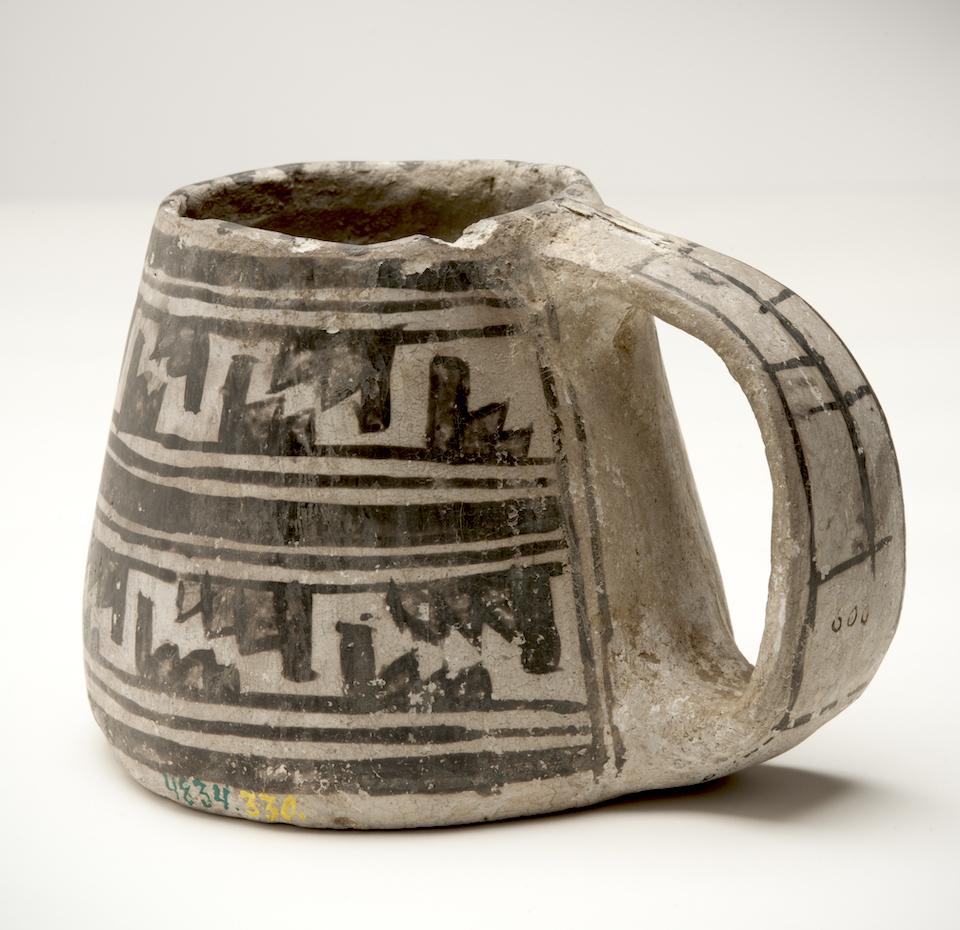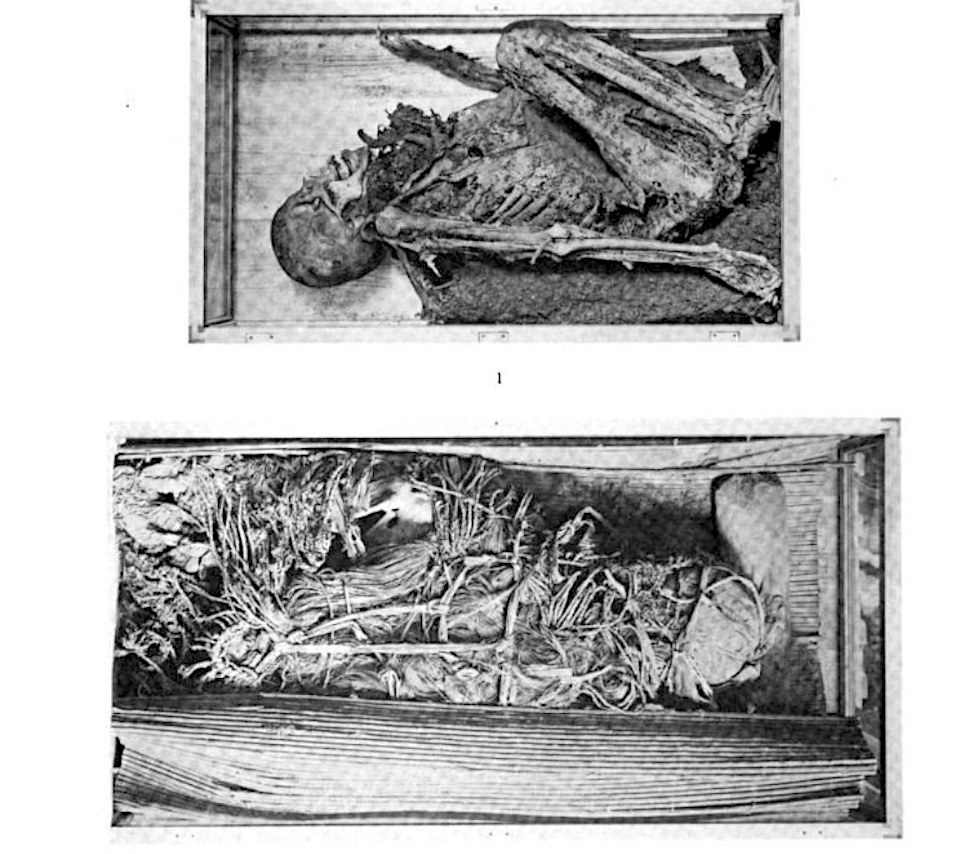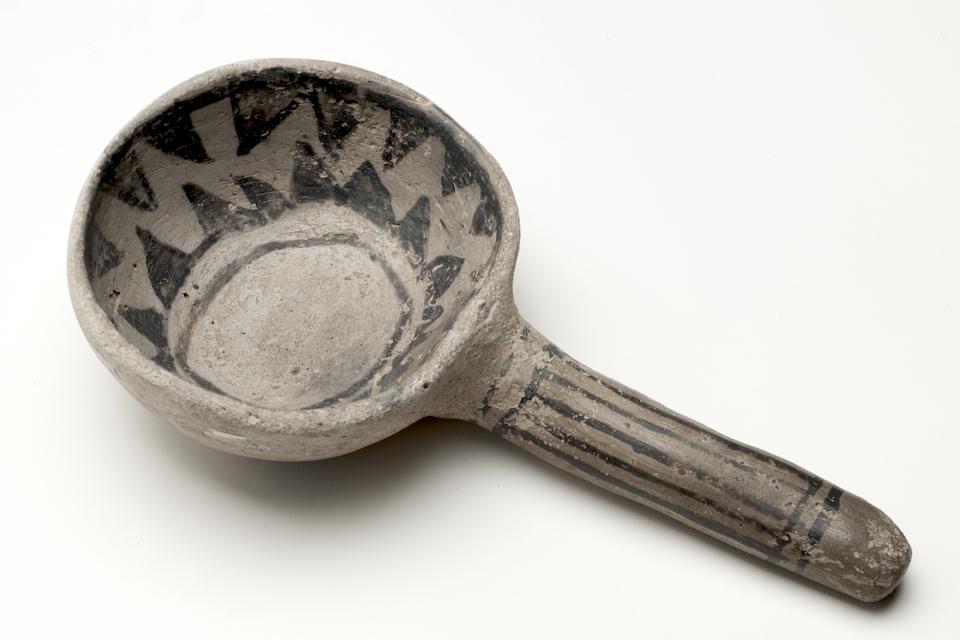
Cliff Palace at Mesa Verde, as it appeared to Gustaf Nordenskiöld in 1891/Gustaf Nordenskiöld
Young Gustaf Nordenskiöld was driven by scientific curiosity, and those who watched him at work professed to the care he took in the field. When he arrived at Mesa Verde in southwestern Colorado in 1891, he not only performed some groundbreaking work in studying the cliff dwellings that later would become the hallmark of Mesa Verde National Park, but he also took hundreds of artifacts back home to Europe with him, where they reside at the National Museum of Finland.
Nordenskiöld was on a worldwide trip he had hoped would cure his tuberculosis when he reached Denver early that year. Upon seeing a collection of items taken from the Mesa Verde region, he headed to Durango, where he found room and board with a local ranching family, the Wetherills.
Richard Wetherill and his brother-in-law, Charles Mason, had stumbled upon the cliff dwellings in December 1888. Three years later they and others guided Nordenskiöld to Mesa Verde and worked alongside him as he studied the architecture, artifacts, and mummified remains. The 23-year-old Swede, amazed at what he found, rather meticulously documented the site, remains, and artifacts with sketches, photographs, excavations, and copious notes.
"The ruins within the caves, the cliff-dwellings or rather cliff towns, are in several respects the most remarkable," he wrote in a book, The Cliff Dwellers of the Mesa Verde, published in 1893. "Throughout the entire length of Mancos Cañon and in all its subdivisions fortress-like buildings have been erected of hewn blocks of sandstone on narrow ledges, often high up the cliffs in almost inaccessible situations.
"These structures, in consequence of their position under a sheltering value of rock, are very well preserved, though they have been abandoned by their inhabitants for several centuries, so long that no tradition of them survives amongst the Ute Indians who lead a nomadic life in the neighbourhoud (sic)."

This mug possibly came from Step House. In Nordenskiöld's book, he pictured a mug like this that was taken from a grave found in Step House/National Museum of Finland
In his book, the young Swede speculated how long the dwellings stood, and how long they stood vacant.
"We are not in possession of any facts that might entitle us to draw any conclusions respecting the date of the Pueblo tribes' ascendancy," he wrote. "It was probaby several centuries earlier than the first visit of the Spaniards to their country. To judge by the present condition of most of the ruins, no very long periods can have elapsed since their erection.
"It is, however, certain that, even at the time of Coronado's expedition (1540s), many tracts were deserted which had supported a numerous agricultural population," Nordenskiöld went on.
As was common practice at the time, Nordenskiöld packed hundreds of artifacts to be shipped back home to Sweden. He carted off mummified remains, bowls, ladles, baskets, pots, mugs, corn cobs, woven sandals, mats, snowshoes he said were made from branches and yucca leaves, pouches (including one filled with salt), various tools, arrows, metates and much, much more.
But getting all these remains and items back to Sweden wasn't easily done. He was arrested for theft, and it took a month before a court ruled he hadn't broken any law and could take the artifacts. That led to an artifact rush on the Southwest that saw many items spirited away. It was a grand theft of archaeological sites that continues today.
"The collection of artifacts and human remains by Gustaf Nordenskiöld and others played an important role in the signing of the 1906 Antiquities Act (signed June 8 by President Theodore Roosevelt), protecting cultural resources, and the establishment of Mesa Verde National Park (June 29, 1906)," said Cristy Brown, the park's public information officer.
The Swede never lived to see passage of The Antiquities Act nor creation of the national park. His health deteriorated, and he died on June 6, 1895, just 27.
Last week the United States and Finland, after a negotiation process that started in 2016, jointly announced the return of remains and a small number of items to native cultures that long have called the Mesa Verde region home.
"The part of the collection that will be returned includes the remains of 20 individuals and 28 funerary objects," said Brown. "The U.S. Department of State and representatives of the Hopi Tribe, Pueblo of Acoma, Pueblo of Zia, and the Pueblo of Zuni (the repatriating tribes) worked together to request the return of the remains and items.

Some of the remains Gustaff Nordenskiöld took from Step House at Mesa Verde in 1891/Gustaff Nordenskiöld
"Once the remains and items are returned to the United States, then the park will work with the repatriating tribes to return to and rebury the remains and items in the park," said Brown. " The repatriating tribes are the leaders of this effort, but we are proud to be able to fulfill our role when the time comes."
According to Interior Department staff, there are 26 federally recognized American Indian tribes that have become traditionally associated with the park:
* Hopi Tribe in Arizona
* The 19 Pueblos of New Mexico (Acoma, Cochiti, Isleta, Jemez, Kewa, Laguna, Nambe, Ohkay Owingeh, Picuris, Pojoaque, San Felipe, San Ildefonso, Santa Ana, Santa Clara, Sandia, Taos, Tesuque, Zia and Zuni)
* Ysleta del Sur Pueblo in Texas
* Navajo Nation in Arizona, New Mexico and Utah
* The Southern Ute Tribe and Ute Mountain Ute Tribe in Colorado
* The Mescalero Apache Tribe and Jicarilla Apache Tribe in New Mexico
The National Museum of Finland, in announcing the agreement, said most of the 600 items Nordenskiöld took would remain at the museum.
"The items, which are estimated to date back to the 13th century, were originally extracted from the graves of roughly 20 Pueblo Indians. In addition to human bones and mummies, goods found in the graves will be returned," a release on the museum's website said. "The artifacts and remains are of particular importance to the descendants of North American Indian tribes. The remainder of the Mesa Verde collection consisting of some 600 items will remain in the possession of the National Museum of Finland."
An email to the museum staff on Friday concerning the repatriation was not immediately answered.

Ladle taken from Mesa Verde by Gustaff Nordenskiöld in 1891/National Museum of Finland




 Support Essential Coverage of Essential Places
Support Essential Coverage of Essential Places







Comments
Well done! Well done! Too much was looted from Mesa Verde in the early years. Well Done!
why should Finland keep any of it?
Good point, Terri. Got me to wondering how many artifacts from cultures in other countries are to be found in museums in the U.S.
Ooooh, such a burn, so true, so righteous, and so justly deserved. At the time these ancient Native Americans artifacts were being carefully preserved and curated back in Finland, the majority of Americans were still focused on genocidally eradicating what was left of the descendants of the people who made these artifacts. Given what today's ATV crowd and other rightwing jingoistic vandals are doing, even now, to the areas improperly ripped away from Bears Ears National Monument as well as to other sites across the west, Nordenskiold and the National Museum of Finland deserve our gratitude for keeping them safe for all these years. Given the current chaos in our government and the ridiculous exhibition to which Finland's president was subjected during his recent visit, why shouldn't Finland keep it all until America grows up?
Nice article. Just visited Mesa Verde for the first time. Went on a tour where I learned that Nordenskiold was 26 when he passed away - just shy of his 27th birthday (29 June 1868 - 6 June 1895).
So your argument for stealing from native tribes is "because Trump"? That's a stupid cop out. Give the materials back to the tribes, Finland.
We Europeans stole the land, stole the children, murdered their parents. Then we stole people from Africa, forcing them to begin our work of turning a paradise into a polluted wasteland. After our victims were destroyed, we started robbing their graves. Now, we are upset because other Europeans did the same thing on "our" land. We claim to love America as we destroy it with chemicals, concrete, and the inevitable violence that is basic to this country's birth. We cannot make America great again because it was never great. We should try making America honest, and good.
No, Mark, it's not just "because Trump" although that would be a good place to start and reason enough at this low point in our history. But, my opinion is actually based more on the demonstrated effects of and risks posed by the mindset that created and continues to protect and sustain people like Trump. Trump is really just one example of a class of people who are everywhere in today's society. Look at the totality of feature articles, news items, and the comments on them on just this website alone. We've got "Utah Politicians Have Inordinate Sway Over Federal Lands" and "This Is No Way To Manage National Parks" and "Legal Challenge Mounted To Trump Administration's Endangered Species Act Changes" and "How Secure Is Wilderness In The National Park System?" and those are just a few of the feature articles highlighting recent misfeasance, malfeasance, and a lack of focus on the protection of public lands and resources. Among the news items, we've got "A Portrait Of National Park System Campgrounds" and "Draft Recommendations Call For Making National Park Campgrounds More Accommodating" and then, particularly pertinent to this discussion, "Thieves Steal Copper Bust Of Orville Wright From Wright Brothers National Memorial" and "Two Mountain Lions Found Dead At Santa Monica Mountains NRA" and "Groups Returning To Court To Force FAA To Adopt Air Tour Management Plans For Parks" and "Ginseng Poachers Nabbed At Mammoth Cave National Park" and "Gas Pipeline Gains OK To Burrow Beneath Chesapeake And Ohio Canal" and "Border Wall Construction At Organ Pipe Cactus National Monument Would Likely Destroy Archaeological Resources" and "Meeting On Grizzly Bear Recovery Plan For North Cascades Coming In Early October" and, again, those are just recent examples. Did I miss the one about the offroad travel that ran over endangered plants on the volcano in Hawaii and the responding comment that used that news as a vehicle to try to soften public disgust with what happened at Joshua Tree during the past shutdown? These stories document a litany of contempt for public property, trust lands, and legacy assets and point back to the scofflaw disrespect rooted in the mindset that created and continues to protect and sustain people like Trump.
You cannot imagine how strongly I support giving the materials back to the tribes or the reasons to do so; however, the "tribes" as you say have to contend with the BIA, which is part of the DOI, which is part of the current federal administration and, at least at this point, there is some question of how well facilities for and conservation of such materials will be supported, financially, administratively, and otherwise. No, Mark, in this environment, it's not a "stupid cop out" to look down the road at all of the factors involved in moving, receiving, repatriating, curating, and preserving these materials and to wonder whether these materials will be protected any better than that copper bust of Orville Wright.